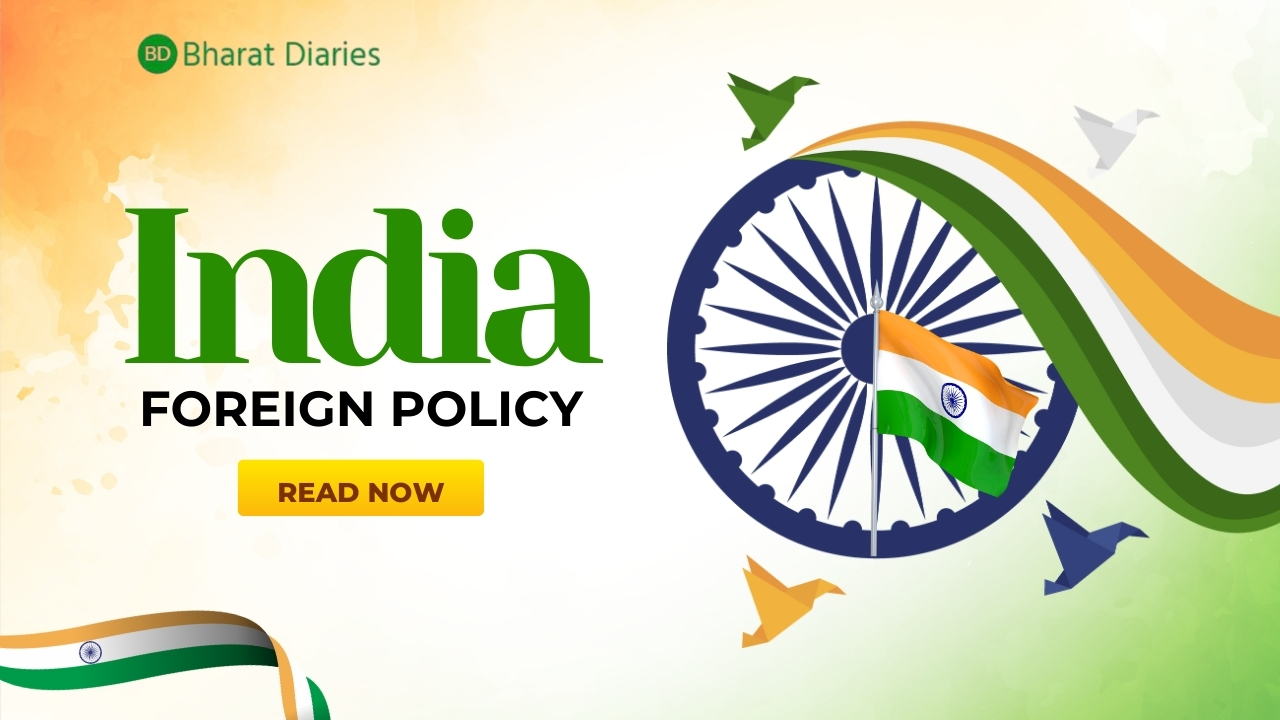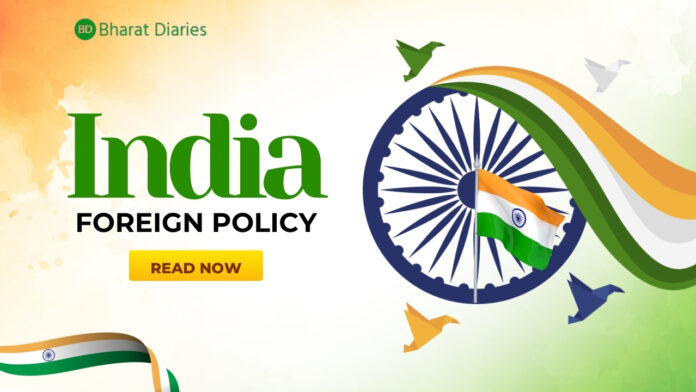
India foreign policy is evolving fast. Can India, Russia, and China form the most powerful global alliance? A deep dive into possibilities, challenges, and future.
Table of Contents
When we talk about India foreign policy, the first thing that comes to mind is balance. India has always walked a fine line—maintaining relations with the West while also keeping its historical friendships alive with countries like Russia, and at the same time carefully managing its often difficult relationship with China. But today, a new possibility is emerging—what if India, Russia, and China came together as one strong trio?
Imagine for a moment: three of the world’s largest countries, with the biggest populations, vast natural resources, military strength, advanced technologies, and centuries-old civilizations, working together. Such an alliance would not only be powerful but could also redefine global politics, economics, and even the future of smaller nations.
Let’s dive into this fascinating possibility.
Why India, Russia, and China Together Matter
When we talk about powerful countries, the United States and European Union often come to mind. But in reality, India, Russia, and China already form one of the most important power centers in the world. Let’s break it down:
- India: The world’s largest democracy, a fast-growing economy, with strengths in IT, space, pharmaceuticals, and a growing defense industry. India also holds soft power with its culture, Bollywood, yoga, and diaspora spread across the world.
- Russia: A superpower in terms of natural resources, military strength (especially nuclear weapons), and global influence. Despite Western sanctions, Russia remains a crucial energy supplier and defense partner.
- China: The world’s second-largest economy, a manufacturing giant, and a rising military and technological power. China’s Belt and Road Initiative has spread its influence across Asia, Africa, and Europe.
Together, these three nations already control:
- Nearly 40% of the world’s population
- More than 20% of global GDP
- Huge military power, including two of the world’s largest nuclear arsenals
- Strategic geographical locations stretching across Eurasia
If they manage to resolve disputes and align their policies, this trio could easily become a counterweight to the Western-dominated world order.
India’s Role in This Trio – The Balancing Power / India foreign policy
India’s foreign policy has always been about maintaining balance. During the Cold War, India was part of the Non-Aligned Movement (NAM), refusing to take sides between the US and the Soviet Union. Today, India continues to follow a similar path—building strong relations with the US, Europe, Japan, and Australia through platforms like Quad, while at the same time staying close to Russia and cautiously engaging with China.
In the India-Russia-China (IRC) trio, India acts as the middle ground:
- With Russia, India has a time-tested friendship. Defense, space cooperation, and energy ties remain strong.
- With China, despite border disputes and trust issues, India maintains deep trade relations. China is one of India’s largest trading partners.
- With the West, India is seen as a democratic partner and a rising power that can counterbalance China.
This makes India’s role unique. If India can bring Russia and China closer while still keeping ties with the West, it can emerge as a true global leader.
वसुधैव कुटुम्बकम
“विश्व एक परिवार है”
The Potential of an India-Russia-China Alliance
If these three countries form a genuine alliance, the global balance of power could change dramatically. Here’s what could happen:
1. Economic Growth and Trade
- India brings skilled manpower, IT, services, and a huge consumer market.
- Russia brings energy resources like oil and gas, along with defense technology.
- China brings manufacturing strength, infrastructure building, and investment capital.
Together, they could form an economic powerhouse bigger than the West. Trade within the trio could reduce dependency on Western markets and create a parallel economic order.
2. Military and Security Cooperation
- India and Russia already have strong defense ties.
- China’s military growth combined with Russia’s advanced technologies could form an unmatched defense block.
- Joint security initiatives could protect not only their borders but also help smaller nations in Asia, Africa, and Latin America.
3. Technology and Innovation
- India’s IT and space sector + China’s manufacturing + Russia’s engineering = world-class innovations.
- They could create alternatives to Western-dominated systems like Google, Apple, or even the US dollar in trade.
4. Voice for the Global South
Many developing countries in Africa, Asia, and Latin America often feel neglected by Western powers. With India in the alliance, this trio could become a champion for weaker nations, offering financial aid, infrastructure projects, and defense cooperation.
Challenges That Stand in the Way
Of course, such an alliance is easier said than done. Several challenges need to be addressed:
- India-China Border Disputes
- The Ladakh clashes and tensions in Arunachal Pradesh are major roadblocks.
- Without trust, true cooperation is difficult.
- Russia-China Closeness vs. India’s Concerns
- Russia and China are already growing closer due to Western sanctions.
- India worries about being sidelined in this friendship.
- India’s Relations with the US and West
- India relies on the US and Europe for investment, trade, and technology.
- Joining a strong alliance with Russia and China might upset Western partners.
- Ideological Differences
- India is a democracy, Russia is semi-authoritarian, and China is a one-party communist state.
- Aligning their political visions may not be easy.
- Global Pressure
- Western powers, especially the US, would not want such an alliance to succeed.
- Sanctions, diplomatic pressure, and propaganda could try to weaken the trio.
What This Means for India’s Common Citizens
Now, you may be wondering—how does this high-level foreign policy talk affect ordinary Indians? Let’s break it down:
- Cheaper Energy: Stronger ties with Russia could mean more affordable oil and gas supplies. This directly affects fuel prices in India.
- Job Opportunities: Economic cooperation with China and Russia could create new industries and jobs in manufacturing, IT, and defense.
- Stronger Rupee: If trade shifts away from the dollar, India could reduce its dependency on Western currencies.
- Security: Military cooperation means a stronger defense against threats from hostile neighbors.
- Global Influence: Indians could feel proud that their country is shaping the future of world politics.
Future Scenarios – What Could Happen Next?
- Best Case Scenario
- India, Russia, and China resolve disputes, form strong economic and security ties, and become the backbone of a new world order.
- Smaller nations rally behind them, creating a fairer global system.
- Moderate Scenario
- The trio works together only on certain issues like trade and energy, but political disputes remain.
- India continues balancing between the West and this alliance.
- Worst Case Scenario
- India-China disputes worsen, pushing India closer to the US.
- Russia and China grow too close, sidelining India.
- The alliance dream collapses.
Conclusion
India’s foreign policy has always been about balance, and the possibility of an India-Russia-China alliance is one of the most exciting yet complicated questions of our time. If successful, this trio could become the most powerful alliance in the world, not only challenging Western dominance but also helping weaker nations rise.
However, trust issues, border disputes, and global pressure remain strong barriers. For India, the path is not easy—but its presence in this trio is what makes the idea so unique and powerful.
As ordinary Indians, we must understand that foreign policy is not just about governments—it impacts our daily lives, from fuel prices to job opportunities. If India plays its cards wisely, it could emerge as a global leader of balance, guiding the future of international politics.
In the end, whether this dream alliance succeeds or not, one thing is certain—India foreign policy will continue to shape not just our nation’s future but the world’s destiny.
